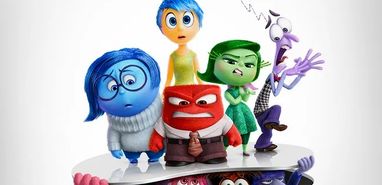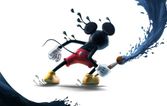
It’s all about puberty in Pixar’s ‘Inside Out 2,’ as Anxiety (voiced by Maya Hawke) tries to overshadow Joy (Amy Poehler) in this highly anticipated sequel.
Anxiety takes the lead in Pixar’s “Inside Out 2,” reflecting director Kelsey Mann’s own pressure to follow the beloved 2015 Oscar winner. The children who adored the original film, featuring Riley (then voiced by Kaitlyn Dias), are now teenagers themselves, navigating advice from TikTok influencers. Anxiety, prevalent in today’s fast-paced world, was also personified by the ancient Greeks as the deadly daughter of night.
In this witty sequel, Anxiety (Maya Hawke) appears as a frazzled figure, gulping energy drinks by the dozen. Riley (now voiced by Kensington Tallman) has entered puberty, sending her core emotions—Joy (Amy Poehler), Anger (Lewis Black), Fear (Tony Hale), Disgust (Liza Lapira), and Sadness (Phyllis Smith)—into a frenzy. The simplistic feelings adults often suppress until therapy are now at the forefront.
Despite the PG rating, the film steers clear of exploring PMS and Libido. Instead, it introduces redundant emotions like Envy (Ayo Edebiri) and Embarrassment (Paul Walter Hauser) that don’t add much to Riley’s chaotic three days at an all-girls hockey camp. As a self-conscious 13-year-old, Riley struggles to impress her coach (Yvette Nicole Brown) and her older teammates, while Anxiety tries to take control, projecting disastrous future scenarios, including Riley’s ultimate fear of being alone forever. Ennui (Adèle Exarchopoulos), with her aloof French accent, dismisses the chaos with indifference.
Design-wise, the “Inside Out” characters remain Pixar’s simplest, with their blocky colors and stiff hair. However, the narrative complexity of Joy stands out. Joy, a zealot for happiness, embodies the self-help books urging readers to overcome their miseries. The original “Inside Out” beautifully conveyed that life can be both happy and sad, a profound message the sequel struggles to match. However, it does emphasize the human complexity of accepting Riley’s dual nature as both good and bad, a loving friend and a status-seeking snob.
The film seeks its identity, settling for relatability if not innovation. Riley’s attempts to navigate her social circles resonate deeply, especially for those who recall the high school politics of lunch table hierarchies.
As the plot weaves through various puns, it highlights the gap between words and their meanings. New characters like Pouchy (James Austin Johnson), a talking fanny pack, and Nostalgia (June Squibb), an elderly lady who humorously pops into Riley’s brain early, steal the scenes. While Nostalgia might not be a toy-selling hit, she represents the film’s honest take on revisiting the past.

By Andrej Kovacevic
Updated on 12th June 2024